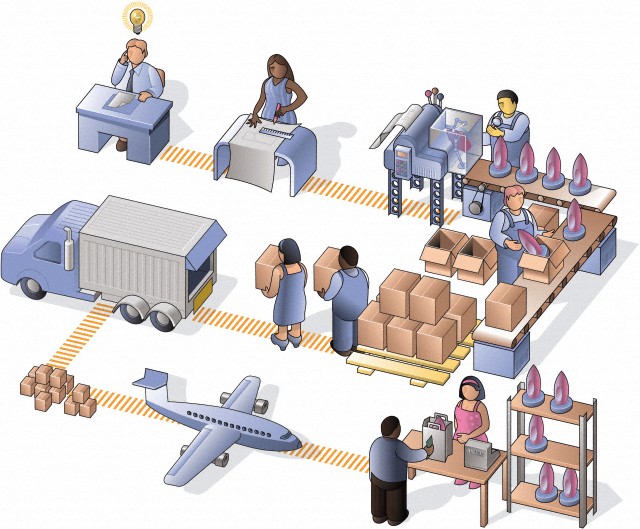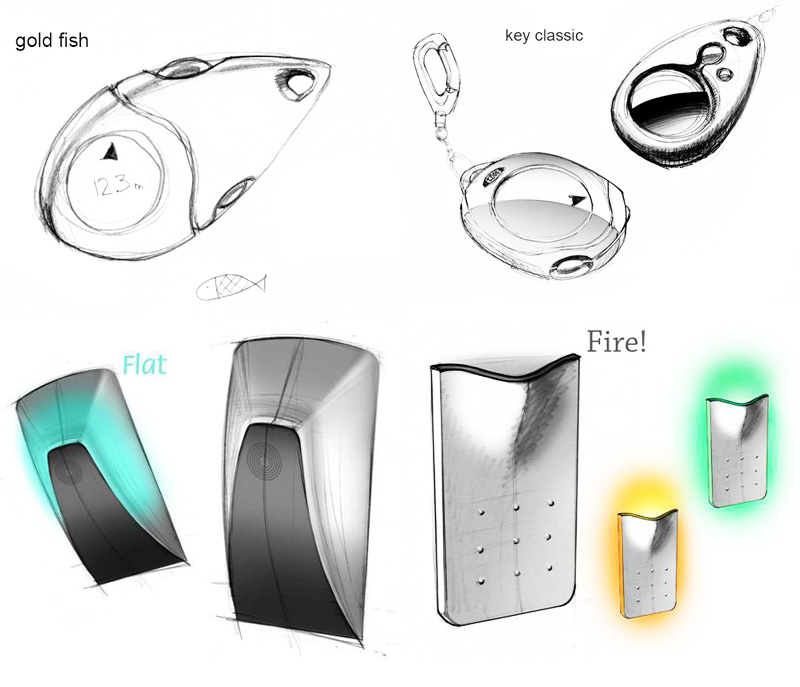How to create a new product for the electronics market. Part 1

Articles about the development of products in the field of electronics - it is a rarity in Habré. I'm not talking about amateur projects or prototypes, but about successful commercial devices for the mass market.
After all, presentations of Apple, Samsung and other brands are just the visible part of the iceberg, which hides the man-decades of work for people of various specializations: engineers, programmers, designers, logistics, managers at various levels, salespeople, and so on. While you are not immersed in this internal kitchen, it may seem that the process is quite simple and clear: there would be an idea, a good team and sufficient funding. However, not all so simple.
')
I want to share my experience and vision, which was formed during my career as an engineer to a manager, in both food and service companies.
Many Habr's readers are familiar with the internal kitchen of software development, and iron is a completely different story. Ready? Then let's go.
To begin, I will tell you how the electronics development process is going on, and compare it with software development. Simplified stages of creating a new device look like this:

Phase number 1. Analysis
At all, this phase passes and is called differently: “Calculations”, “Design”, “Collection of requirements”. Some companies immediately start with those. tasks written by an engineer "in the subject", others devil a lot of time planning and working out. Why is this important? The reasons are simple:
- Budget planning. As a rule, the product development process is quite long and it will be unpleasant if after 8–9 months of investment you suddenly run out of money. Solid companies and product managers have their own planning technologies for new products, which banks even accept as guarantees for loans.
- Cost Optimization. If you produce 50 thousand devices per year, it will be useful to save every dollar in the cost of the device.
- Control. Thousands of people are tied to the development of any product, even a fairly simple one (directly or indirectly: suppliers of components, engineers, marketers, factory workers, etc.). Tasks will need to be delegated to the right specialists at the right time.
- The price of an error , it is very high, and the sooner we identify it, the better.
The main task of the analysis phase is to define a clear product concept , which is to be worked on at subsequent stages, and synchronize it with other participants as necessary. It is necessary to take into account the issues of end customers, cost, requirements of production sites, project plans, contractual obligations, budgets, funding, executors, authorizing and certification documents, the choice of materials and components.
If we talk about planning a new product , then this is a kind of art in which product managers are involved. (I want to devote a separate post to product management in electronics).
The final stage of the analysis phase is the preparation of a technical task , in it we define the functional and non-functional requirements for the product, work through the technical design and create sketches of the device:

Example: sketches of new electronic devices created by the Promwad company industrial designers team
In electronics, we always talk about resource limitations. Off-topic software developers have long forgotten about the deficit, for example, RAM. In the meantime, such restrictions make the work of an engineer extremely exciting. For electronic engineers, the technical parameters of the device are the framework of creativity.
I have already spoken about the price of an error, making changes in electronics is long and expensive. For software, you can release updates, and what can be released for a real item? Only another real subject in which defects are eliminated.
Some products in the field of electronics "did not take off" precisely because of non-working software.
Even the most careful planning will not protect against errors by 100%. You probably read these news headlines:
- Apple recalls iPod nano: a battery defect was found in the players
- Nokia recalls 14 million potentially defective chargers
- Intel recalls batch of chipsets for processors due to a defect
- Garmin recalls more than a million GPS navigators due to overheating of batteries
- Lenovo recalls its computers due to the risk of sudden fire
So, what do we get as a result of the design phase? A set of documentation, contractual obligations and a team that understands the product and is charged for success.
Phase number 2. Development
As a rule, an electronic product consists of the following components, which the engineering department deals with:
- Iron
- Housing
- Soft
- Production technology
But these components remain outside the engineering department (we will return to them later):
|
|
Iron Thanks to modern CAD systems, hardware development is a fairly standardized process that does not last long with well-formed introductory data (from 2 weeks to a couple of months at most). The most difficult thing is design. The fact is that the physical location of some elements relative to others plays a large role and has a direct impact on the performance of a modern device.
Industrial design . The exterior of the housing is tightly tied to the production technology. Technology is materials, which means cost. A designer can draw an absolutely magic piece, but for its realization it will take the work of a designer and technologist. Technological leaders put unique design at the forefront, and therefore continuously create new production technologies.
Software in electronics works in conditions of limited resources. The approach to its development is fundamentally different from the approaches adopted in the software development industry for the web, desktops, etc. Other tools and a different development environment are used: OS versions for embedded systems Windows CE, Linux Embedded, etc.
Electronic programmers are strongly tied to hardware. If the developer of desktop applications does not think about the correctness of their hardware platform, the software engineer is constantly faced with this, especially when working with new components. I had projects in which bugs in the program arose because of errors in the processor or from poor installation. By the way, the last is a really serious problem for design centers.
Another example: a programmer and designer can create a user interface that will work fine on a test platform, but will cause an overload of RAM on the real device. Moreover, such errors can not always be noticed immediately. Day the device works correctly, and then reboots.
All these features greatly complicate the lives of programmers who work with embedded software, although many experts choose electronics just for the sake of such fascinating tasks.
As a rule, the intermediate results of the development phase are prototypes of the device . The process of assembling them is a separate story. From around the world, hundreds of components come together to a single point on the map, each one is packaged in a separate package. At a specialized enterprise, working samples are made using special technologies; they may look like this:

Example: a sample of a flight recorder developed by Promwad. The hull is grown in a 3D printer using laser stereolithography technology. Due to grinding and painting the appearance of the device was as close as possible to the factory version.
Your position on the world map is almost irrelevant when developing software. But in the development of iron production time of the sample can vary tenfold depending on the position of the developer and manufacturer. Companies in China collect a sample in 2 weeks, in Russia this period can be up to a couple of months.
After assembly, the samples go for testing . According to its results, we can repeat the whole process from the very beginning, in order to correct the found jambs or understand that nobody needs a product in such a design. Such is the harsh scrum c cycle per year.
Of course, we look forward to a successful completion of testing, because we want to go to the most exciting part of the project - setting up electronics for mass production ...
UP. Read the rest of the article here: part 2 .
Source: https://habr.com/ru/post/171269/
All Articles